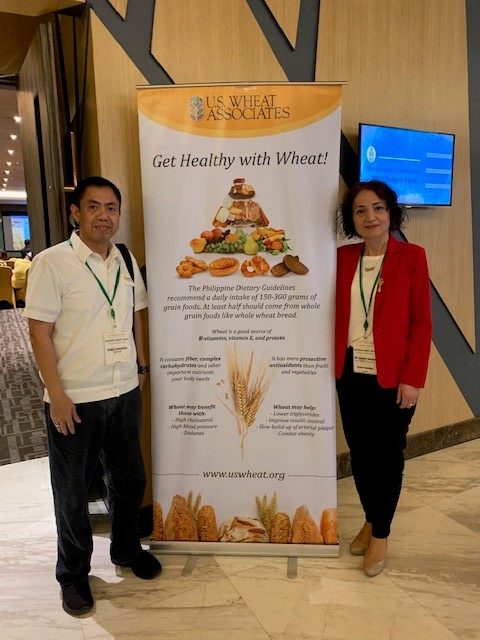The Science Behind Promoting U.S. Wheat
Originally printed in Dakota Gold, June 2019, Volume 35, No. 3; Reprinted with permission from the North Dakota Wheat Commission
In May, Dr. Senay Simsek, Professor and Wheat Quality Specialist with North Dakota State University (NDSU), traveled to the Philippines and Indonesia with U.S. Wheat Associates (USW) to meet with millers and end-users of U.S. wheat. The objective of the visits and seminars was to provide technical assistance to mills to improve their efficiency to produce flour that meets their local needs. USW staff included Peter Lloyd, Andres Saturno Eguren, Ivan Goh, Joe Sowers and Matt Weimar.
The seminars and technical visits to the mills were intense, and included presentations on Cereal Chemistry at the Mill, Biochemistry Behind Solvent Retention Capacity (SRC), and Food Safety in the Mill and Understanding Mycotoxins. These presentations are likely baffling to any that don’t have a cereal chemistry or cereal science degree, so it may be hard to understand how this type of activity helps U.S. wheat producers.
Wheat milling and baking with flour may seem like simple, straight forward tasks, but in reality, getting the correct flour from various classes and grades of wheat that corresponds into the end-use products consumers want is a complicated task.
“Dr. Simsek presents information to overseas millers and bakers that gives them an advantage in producing superior products,” says Joe Sowers, USW Regional Vice President for the Philippines and Korea. “The Philippine wheat foods industry is expanding very quickly, creating a huge demand for training and information. Dr. Simsek’s specialized expertise of HRS [hard red spring] is incredibly useful for the Philippine millers and bakers. She offers a depth of knowledge in cereal chemistry useful to the most experienced miller and baker while still accessible to newer entrants to the industry.”
Over a century of investment in HRS breeding has yielded an ideal raw material for Philippine baked goods while nearly 60 years of market development work has helped make it the largest foreign market in the world for the class. In 2018/19, the Philippines imported 68 million bushels of HRS, a historic record for any country in the world. Total U.S. sales of all wheat classes to the Philippines were almost double that at 120 million bushels.
Sales of HRS into Indonesia are not quite as robust due to a strong U.S. dollar and low flour prices. However, successes by USW in familiarizing the milling industry with the U.S. marketing system and gaining confidence in U.S. grain inspection protocols have led to average annual total wheat sales exceeding 35 million bushels, up nearly five-fold from the previous 5-year average. HRS sales last year were about 7 million bushels.
Matt Weimar, USW Regional Vice President for South Asia sees potential for growth of HRS sales. “We are optimistic that current economic and demographic trends will increase disposable income and consumer interest in higher quality end products, which often involve using HRS,” says Weimar. “Also, the Indonesian industry is quite different from others. The bread baking industry is dominated by thousands of small entrepreneurs, which represent about 65% of the bread market and their mixing equipment isn’t ideal for handling HRS.”
USW is working diligently through training programs such as this and targeted short courses to show customers the benefits of using U.S. wheat. Programs carried out by USW helps U.S. producers gain and maintain a foothold in some of the most competitive wheat markets in the world.
Header Photo Caption: Dr. Simsek (middle) discusses bread quality in Indonesia.



